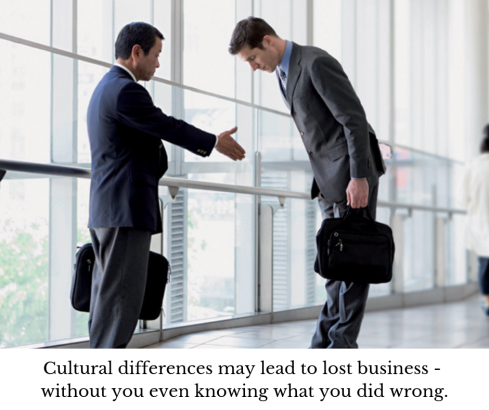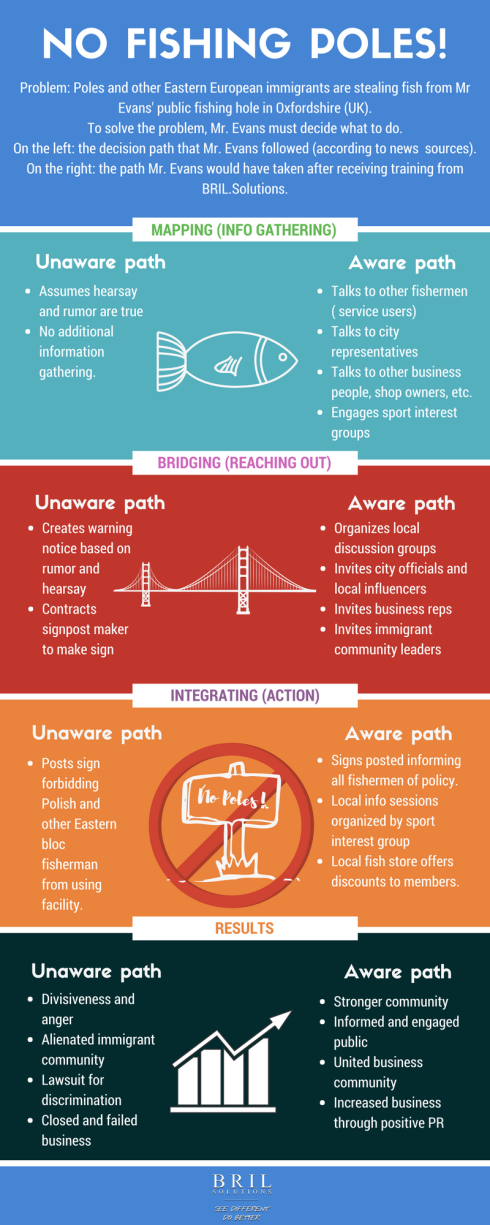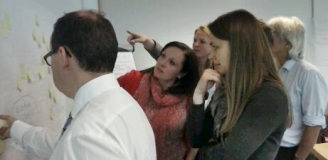
Why Cultural Awareness is Crucial for Global Business
Your sales presentation has just concluded. You have a good feeling about it. This is the first time you’ve done business in this country – on this continent, in fact! – but no matter. You gave your very best sales presentation, the one that always scores when you’re at home. You eagerly await the client’s reaction. But there’s no reaction. None. Only silence. The young, energetic guy you pitched to finally tells you, “Thank you. We will let you know.” The older guy sleeping in the corner, the one you ignored, stands up and everyone follows him out. The meeting is over.
You go back to your hotel room and wait. And wait. The answer never comes. You call, many times, trying to get an answer before your flight leaves that evening. For some reason nobody is taking your calls. Finally, a week after you’ve returned home, you receive a terse email, “Thank you for your presentation. We have decided not to do business with your company.”
What went wrong?
What happened? You gave your very best presentation. When you’ve pitched clients at home using this same presentation, prospects have been eager to sign contracts with you. Why didn’t this client react the same way?
The problem is, you may never find out. Because what went wrong was most likely based on something you don’t know and couldn’t possibly recognize. Was it that you focused on the wrong target? Was it your presentation? Too long? Too short? Not enough information? Too much? Was it that you wanted to skip the lunch they offered and get right down to business? That you also skipped the dinner invitation in favor of getting right back to your home office? You don’t know because you don’t know. You’re not culturally aware.
When doing international business, there are certain things you must know. The basic business information is not enough; you also need to develop cultural awareness.
Cultural awareness
Appreciating that individuals from different cultural backgrounds have different cultural norms, practices and expectations seems like a nice-to-know social skill. The reality is that this knowledge is vital if you want to be successful in international business. Awareness of cultural differences isn’t simply about making people feel comfortable with good manners at the dinner table. Or knowing when to bow or when to shake hands. People from different countries and different cultures have their own ways of doing business. At work, they react to inputs and suggestions differently, they communicate differently, and they make decisions differently. Being aware of these differences is crucial to doing global business.
What are cultural differences?
Cultural differences exist in virtually every human interaction. You will experience these as differences among the individuals you interact with. Even your good friends might have different perspectives, interpretations, understanding and behaviors to yourself. This is an indicator of cultural differences, which may stem from influences such as racial difference, local or family culture, or historical influences. The key is that you will notice the person’s perspective and habits are different from yours.
In the workplace, you may experience a struggle with either colleagues or clients. You want to perform a set of tasks, and you know how to do them, but sometimes colleagues or clients insist on things being done ‘their’ way. It seems that no matter what you say or do, they keep on doing it wrong!
At the international business level, these differences can be magnified many times over. An international client, in some cases, may not feel heard and respected, even though you have been trying your best to communicate with them. Moreover, he or she has the luxury of simply rejecting your proposal if they feel disrespected. The most frustrating part is that you may not even know why they rejected your offer.
Why become culturally aware?
Research shows (KPMG, 2012) that poor appreciation of cultural differences and communication can lead to a loss of potential business by as much as 26%. Additional research by McKinsey (Diversity Matters, 2015; and Delivering Through Diversity, 2018) has shown measurable positive financial performance in companies which take active measures to manage cultural differences through diversity. Lastly, had our salesman in the opening anecdote been culturally aware, his client may have been just as eager to do business as his clients back home.
By recognizing the cultural differences and becoming more culturally aware, the differences no longer become a source of conflict or poor results. On the contrary: we can learn how to leverage these differences to improve work processes, create business excellence and improve overall performance. No longer will you wonder why the business deal went wrong
How to become culturally aware
Developing cultural awareness is the basic foundation to courses offered at ELM Graduate School through our partner BRIL.Solutions. To find out what your level of cultural awareness is, and how you can improve your intercultural business skills, contact us for more information.
For more information regarding our course offered 12 – 13 June, please refer to our website: Intercultural Business Skills – open course.
Leo Salazar
29 April 2019
Kuala Lumpur, Malaysia



 ed more than my share of crises, I read this newsletter with particular interest. His tips centered around three points:
ed more than my share of crises, I read this newsletter with particular interest. His tips centered around three points:

